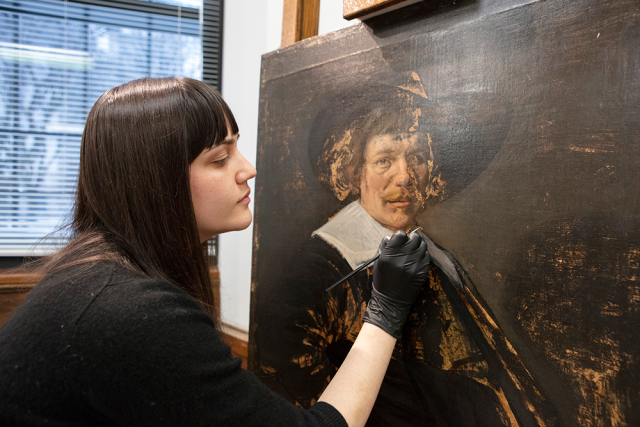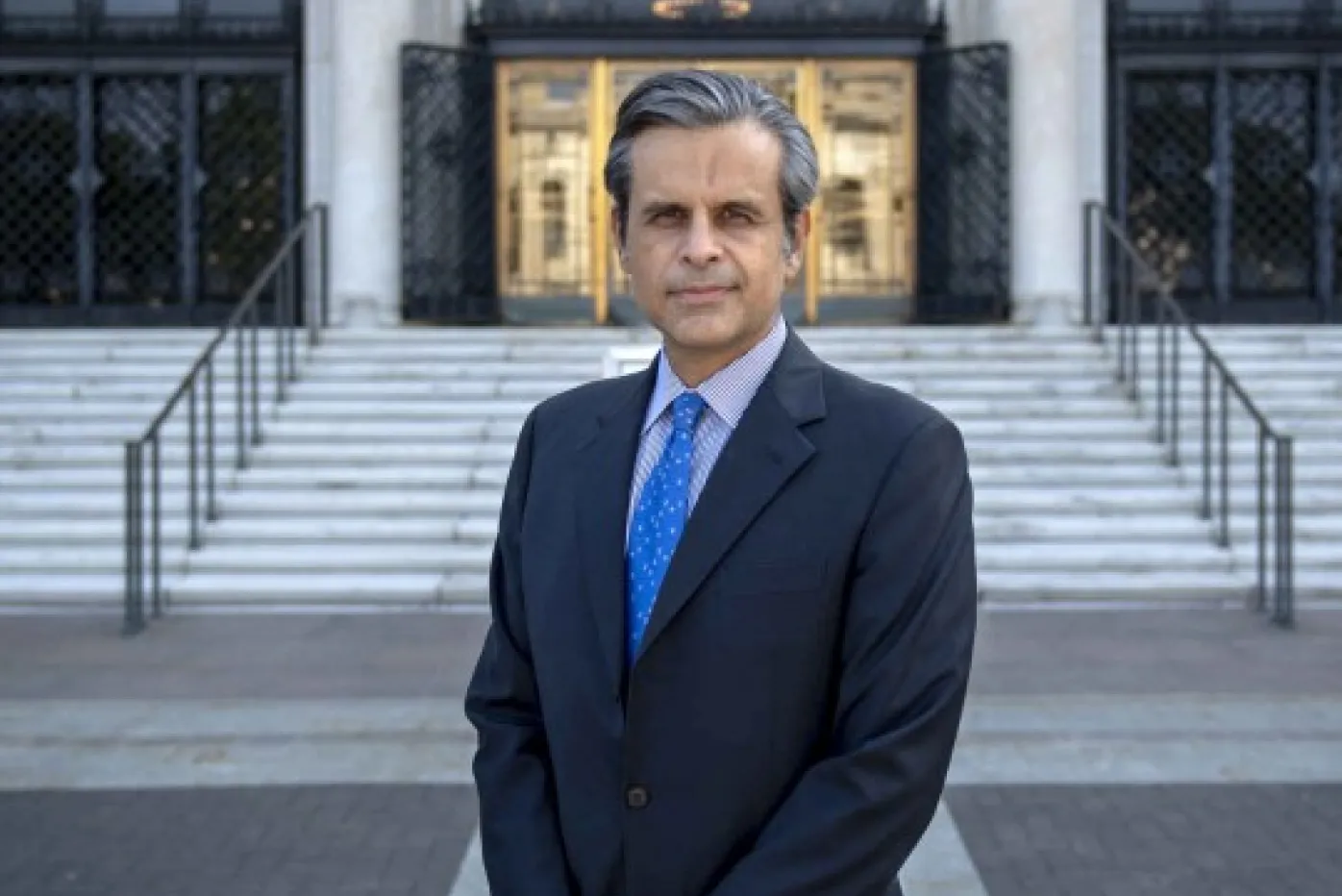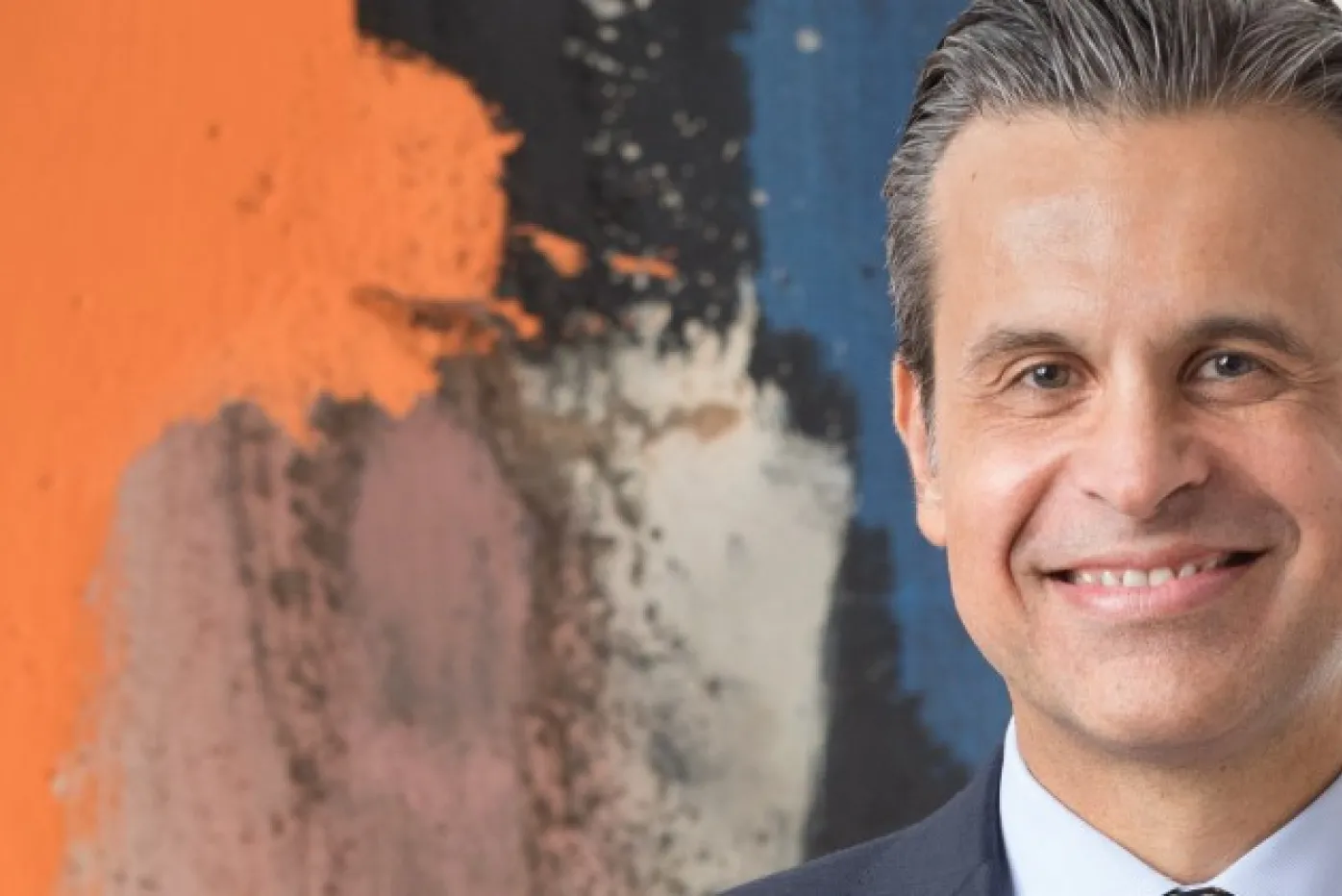From the Director, April 2019
Updated Jul 20, 2022
Conservation on display
During the years I served as a DIA curator, I spent much time doing research in our conservation department. Exploring artwork under a microscope, discovering the elemental composition of pigments used during the Renaissance, and examining paintings with the help of X-radiography, raking or ultraviolet light were and still are some of my favorite activities.
Not many people know that the DIA is not only one of the best museums in the country, but also one that is equipped with the tools and technologies to perform scientific research on our works of art at the highest level. Just to give you an example of the caliber of our conservators and scientific expertise, the Detroit FBI division and the DIA recently held a workshop in the museum to help the local Art Crime team with their training. It was fascinating and of course, confidential.
On a less secretive note, we recently brought an example of our conservation work into our public galleries. It is a rare opportunity to take a look at some of our behind-the-scenes activities. Becca Goodman, DIA’s Samuel H. Kress Fellow in Painting Conservation, is treating a painting by artist Jan Hals (Dutch, 1620-54), Portrait of a Man, in a gallery adjacent to Rivera Court. This Portrait is around 375 years old and suffered an amateurish restoration before it became part of the DIA collection. Becca is treating the work, like a doctor in a hospital treats a patient, to bring it back into good health. The process is fascinating and it requires not only the collaboration of DIA scientists, curators and conservators, but also rigor, sensitivity and attention to detail in order to implement a successful treatment that respects the artist’s original intent and the history of art.
 All of you can see the great job Becca is doing and ask her questions every Thursday through the end of April. She tells me that students are very interested and that one even stayed for many hours patiently observing her in-painting practice. I am not surprised because we know from evaluation that students during their visits to museums (and we welcome around 74,000 each year) are very keen to know how artworks are made and with which materials. Furthermore, Becca’s presence in the galleries is clearly inspiring future conservators!! The DIA is a place to learn and to inspire.
All of you can see the great job Becca is doing and ask her questions every Thursday through the end of April. She tells me that students are very interested and that one even stayed for many hours patiently observing her in-painting practice. I am not surprised because we know from evaluation that students during their visits to museums (and we welcome around 74,000 each year) are very keen to know how artworks are made and with which materials. Furthermore, Becca’s presence in the galleries is clearly inspiring future conservators!! The DIA is a place to learn and to inspire.
We want our visitors to experience our collection from all possible perspectives and science is one that is unexpected when we think about artwork. In this vein, next December we will celebrate one of our visitors’ favorite paintings, The Wedding Dance, with an exhibition that commemorates the 450th anniversary of the death of its author, Pieter Bruegel, The Elder (ca. 1525 – 1569), unveiling the hidden secrets behind the making of this masterpiece. It will be a unique opportunity to enjoy and explore a beautiful work through the mind of our scientists and conservators. In the meantime, please stop by the museum and see the conservation progress of our Jan Hals painting. You will be amazed at what the DIA can do to preserve our cultural heritage for generations to come.

DIA Director, Salvador Salort-Pons in Rivera Court
Conservation on display
During the years I served as a DIA curator, I spent much time doing research in our conservation department. Exploring artwork under a microscope, discovering the elemental composition of pigments used during the Renaissance, and examining paintings with the help of X-radiography, raking or ultraviolet light were and still are some of my favorite activities.
Not many people know that the DIA is not only one of the best museums in the country, but also one that is equipped with the tools and technologies to perform scientific research on our works of art at the highest level. Just to give you an example of the caliber of our conservators and scientific expertise, the Detroit FBI division and the DIA recently held a workshop in the museum to help the local Art Crime team with their training. It was fascinating and of course, confidential.
On a less secretive note, we recently brought an example of our conservation work into our public galleries. It is a rare opportunity to take a look at some of our behind-the-scenes activities. Becca Goodman, DIA’s Samuel H. Kress Fellow in Painting Conservation, is treating a painting by artist Jan Hals (Dutch, 1620-54), Portrait of a Man, in a gallery adjacent to Rivera Court. This Portrait is around 375 years old and suffered an amateurish restoration before it became part of the DIA collection. Becca is treating the work, like a doctor in a hospital treats a patient, to bring it back into good health. The process is fascinating and it requires not only the collaboration of DIA scientists, curators and conservators, but also rigor, sensitivity and attention to detail in order to implement a successful treatment that respects the artist’s original intent and the history of art.
 All of you can see the great job Becca is doing and ask her questions every Thursday through the end of April. She tells me that students are very interested and that one even stayed for many hours patiently observing her in-painting practice. I am not surprised because we know from evaluation that students during their visits to museums (and we welcome around 74,000 each year) are very keen to know how artworks are made and with which materials. Furthermore, Becca’s presence in the galleries is clearly inspiring future conservators!! The DIA is a place to learn and to inspire.
All of you can see the great job Becca is doing and ask her questions every Thursday through the end of April. She tells me that students are very interested and that one even stayed for many hours patiently observing her in-painting practice. I am not surprised because we know from evaluation that students during their visits to museums (and we welcome around 74,000 each year) are very keen to know how artworks are made and with which materials. Furthermore, Becca’s presence in the galleries is clearly inspiring future conservators!! The DIA is a place to learn and to inspire.
We want our visitors to experience our collection from all possible perspectives and science is one that is unexpected when we think about artwork. In this vein, next December we will celebrate one of our visitors’ favorite paintings, The Wedding Dance, with an exhibition that commemorates the 450th anniversary of the death of its author, Pieter Bruegel, The Elder (ca. 1525 – 1569), unveiling the hidden secrets behind the making of this masterpiece. It will be a unique opportunity to enjoy and explore a beautiful work through the mind of our scientists and conservators. In the meantime, please stop by the museum and see the conservation progress of our Jan Hals painting. You will be amazed at what the DIA can do to preserve our cultural heritage for generations to come.

